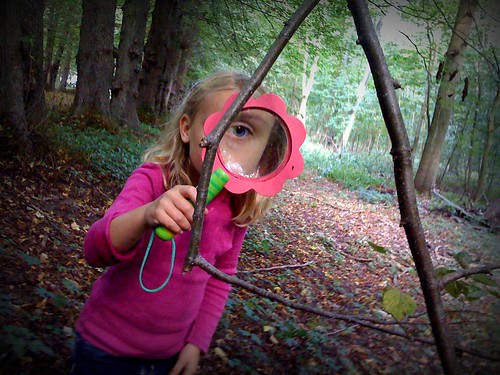Category Archives for Relationships
The Best Way to Create Misunderstandings
Today I’m going to blow the lid off one of the most common thought distortions I see happening in the world today. It’s responsible for arguments, knock-down-drag-out fights, misunderstandings, break-ups, and I’m sure a whole slew of other things. Women use it. Men use it. Teenagers use it. It’s mind reading – believing others know what you’re thinking and should act accordingly, then getting upset when they don’t, or even thinking you know what someone else is thinking.
Unless you are a true mind reader (and I don’t know any), you simply have no clue what goes through someone else’s mind. Sure we might have a strong connection with someone, be able to finish their sentences, and be right most of the time on what they are thinking. But we typically don’t get into trouble in those circumstances, do we? It’s when we assume and we’re wrong that the real problem begins.
If you’re anything like me, you have conversations with yourself in your head all the time. It’s the mind chatter that goes on, your thoughts, judgments, inner critic or inner cheerleader. When we get so wrapped up in our own thoughts, we just get one perspective. And truth be told, our thoughts can be deceptive sometimes. Our mind serves to protect us and to look for evidence to support our beliefs. If we believe we’re being treated unfairly, our mind looks for evidence, and we undoubtedly will find it. Then our feelings follow and then our reaction to the situation. And it all happens very quickly.
When we engage in assuming we know what others think or that others know what we think, we fall into certain belief traps, such as:
- I think THIS, therefore everyone must think it too. Nothing could be further from the truth. We are all unique individuals with our own thoughts. While there are commonalities in how we think, no two people will have exactly the same thoughts all the time. To combat this assumption, remind yourself that everyone thinks differently.
- Others SHOULD KNOW HOW I THINK without me having to say it. Ahhhh, what a lovely idea. But a little naïve and romantic. Getting in the “should-ing” game is dangerous territory…a place of expecting everything is perfect, your needs always come first and always get met, and that you don’t have to work at it. It’s not realistic. To blow this assumption out of the water, tell yourself that in order to get your needs met, you need to clearly communicate them, which includes saying them out loud (not just in your head).
- If he/she knows what I think, they SHOULD DO WHAT I WANT. Another part of the “should-ing” family, this assumption underscores our desire to have control of how other people behave, feel, and think. When we assume others know what we think, there’s a common misconception that if they know they will act accordingly. But we do not have control over anything, except ourselves and how we think and act. To stave off this assumption, remember that everyone has a choice as to how they react and that you only have control over yourself.
The only way to truly know what someone else is thinking is to ask them. And the only way others will know what you are thinking is if you tell them. So get the conversation out of your head then out of your mouth.
Photo: Limecrime Mini-cards! © by queercatkitten
Focusing on What Works
 Do you often struggle in one or more areas of your life? Finances, health, relationships, work, etc.? It seems like the areas in which we find challenges are ones we focus on, which only makes sense if you believe, like many of us seem to, that you must fix what is broken. Society bombards us with messages of improving those areas. We must listen, because the messages keep coming.
Do you often struggle in one or more areas of your life? Finances, health, relationships, work, etc.? It seems like the areas in which we find challenges are ones we focus on, which only makes sense if you believe, like many of us seem to, that you must fix what is broken. Society bombards us with messages of improving those areas. We must listen, because the messages keep coming.
But how much time do we spend focusing on the areas that ARE working well? If you’re anything like me, I’m guessing you don’t focus much on those at all. Yet, if we’re breathing (and reading this), we must be doing something right.
It’s all a matter of perspective.
And to take it another step further, what if you could learn to love the part of you that isn’t “perfect” or the challenge you are facing. I’m not talking doe-eyed, weak-in-the-knees kind of love, but an acceptance of what is.
I began this practice after reading the book “Learning to Love Yourself: A Guide to Becoming Centered” by Gay Hendricks a few years ago. In it, he talks about consciously accepting the parts of yourself that you struggle with. Saying outloud the phrase “I love that part of me that…” is a cornerstone to this practice. For example, when I struggle with feeling overwhelmed about a deadline, I might say to myself “I love the part of me that has difficulty staying focused” or “I love the part of me that would rather be writing a song.” Inevitably, I end up with a smile on my face or a sense of relief, because just stopping and saying something that seems so contrary to what I’m thinking or experiencing gives me persmission to be more gentle with myself and shifts my perspective. And, it’s all a matter of perspective.
So what are you doing that is working for you? Do you take time to recognize those things, or just gloss over them, sometimes unconsciously, on your way to thoughts of what isn’t working well? Take some time to focus on what is working and shift your perspective. Here’s some tips to try:
- Write a list of things that are working well for you. Things that are working well are not areas that require a lot from you. They are things that happen on auto-pilot and can be as simple as taking five minutes in the morning to stretch, taking a walk around the block, or brushing your teeth before bed. Keep this list with you and add to it as you think of more. Look at it when you are having one of those “nothing is working well” moments.
- Pick one thing from your “things that are working well” list and DO MORE OF IT.
- Think of one area in your life that you would like to change. Be specific. For example, one of my areas to work on is doing one thing at a time (which I call “mono-tasking”). That’s pretty easy to measure. I’m either doing one thing at a time or I’m not. Then, say “I love the part of me that…” and fill in the rest with the area you are focusing on. For me, I might say “I love the part of me that has difficulty focusing on one thing at a time.” Say your phrase out loud five times. Notice how you feel after saying it.
Remember, it may seem easier to focus on the problems, but doing so just gives the problems more energy, which I’m guessing is NOT what you want to do. Switching your focus to what is working and accepting when you are challenged by it is a much gentler way of being, which I’m guessing is more of what you DO want.
I’d love to hear what results you get from shifting your focus. Leave a comment below.
Photo: Curious kid © by Mads Boedker
Book Review: Change Your Thoughts, Change Your Life: Living the Wisdom of the Tao by Wayne Dyer
For over two decades, I’ve followed the work of Dr. Wayne Dyer, author and speaker. His work focuses on self-improvement, specifically on how to shift your perspective and thoughts to feel more centered, balanced, and happy. For sure, his work has helped shape not only who I am personally but my calling to do this same type of work with clients.
In his book, Change Your Thoughts – Change Your Life: Living the Wisdom of the Tao, Dyer explores the ancient teachings of Lao-tzu, who dictated 81 verses of text that provide guidance on living a balanced and moral life. Dr. Dyer spent a year living with each of the 81 verses, exploring them in his own life and writing about them.
The book holds 81 chapters, each devoted to one of the teachings. Dyer provides an interpretation or Lao-tzu’s teachings as well as practical advice on how to practice each of the teachings. He encourages readers to sit with no more than one chapter a day to fully take in the words and suggestions for putting that lesson into practice.
Each chapter touts a wonderful life lesson, a nugget of wisdom passed down through the ages. Examples of the lessons in this book include living:
- Creatively
- With Inner Conviction
- With Constancy
- Without Attachment
- From Greatness
- Calmly
- In Obscurity
- Beyond Appearances
- Beyond Judgment
- By Letting Go
- By Being Here Now
- By Bending
- Without Resentments
The advice Dyer provides includes tips like:
- Being silent and listening to your thoughts
- Trusting yourself
- Being aware of what is going on around you
- Practicing forgiveness
- Learning from the wisdom of children
If ever there was a “how-to” manual for how to live, this is it. I highly recommend this book as part of any good self-help collection.
Lessons from My Mother: The Legacy of Relationships

As my family and I prepared my mother’s memorial recently, the whole idea of legacy kept coming up. The legacy my mother left behind and the legacy my sister and I are creating and will pass on to the next generation.
My mother’s mantra in recent years was “be peace.” She signed off every email with it. She even had it on her license plate. It colored her actions and her way of being in the world.
My mother strove for peace – in the world and within herself. As I have mentioned before, my mother was mentally ill. She battled depression among other things stemming from the loss of her own mother when she was 5 years old. While listening to her friends describe her and the work she has done to help others, I couldn’t help but wonder how hard it must have been for her.
While she touched many lives and had many acquaintances, she did not have many close, peaceful relationships. She didn’t allow herself to get deeply close to many people and it seems most people got a little piece of her, but not the whole her. Those who she allowed close to her (family and a handful of friends) experienced her very differently than those she kept at a distance. Her close relationships were often marked with turmoil and drama. Yet she longed for peace. The relationships at arm’s length got to see her as she longed to be – peaceful, compassionate, and dynamic.
Anyone whose life has been touched by mental illness can tell you it’s a long and winding road. My mother’s and my relationship was challenging in the last years of her life. In order to create the balance and peace I longed for, I had to maintain distance from her, yet I still wasn’t able to see her as she longed to be. The mother I knew struggled with intimacy. She was demanding, critical, and harsh in her quest for peace, expecting others to conform to her unrealistic expectations about how things should be.
As I mourn the loss of my mother (both the mother I had and the one I longed to have), I am struck by the similarities in our paths. My life’s work involves helping others, just as my mother’s did. And I too long for peace, both within myself and in the world around me. I am deeply saddened that I didn’t know the woman many of her friends knew. However I feel my heart softening with time, realizing she did the best she could. And remembering how difficult it must have been for her to live such a duplicitous life.
My mother leaves behind an incredibly important legacy of peace. While she had difficulty realizing peace in many of her close relationships, she was an inspiration to many. I am proud to be a part of and share her legacy, and to carry it on in my own way.
Be Peace.
Ready to Say YES to YOU?
 April showers may bring May flowers, but sometimes there’s a bit more to it than that. If you’ve ever had a struggle and overcome it, you know that growth doesn’t just happen without some growing pains. We might be able to practice some great self care rituals, get some good routines going, but then get side-tracked because of how our journey is affecting others. In other words, when you start to make some positive changes, people around you may not be as excited as you and start to do things that pull you back into old patterns and habits. Sound familiar?
April showers may bring May flowers, but sometimes there’s a bit more to it than that. If you’ve ever had a struggle and overcome it, you know that growth doesn’t just happen without some growing pains. We might be able to practice some great self care rituals, get some good routines going, but then get side-tracked because of how our journey is affecting others. In other words, when you start to make some positive changes, people around you may not be as excited as you and start to do things that pull you back into old patterns and habits. Sound familiar?
If women are “programmed” to do anything, it’s to please others – don’t rock the boat, don’t make waves, and be a “good girl.” But what happens then is that you can get railroaded, treated like a door mat, and find yourself right back where you started, confused and even more frustrated than you were before you started making positive changes.
If you’re ready to start saying YES to yourself and move past always being the “good girl” (rather than the happy girl), please join me for May’s FREE Teleseminar…“Getting Over the Good Girl Syndrome: Learning to Say No”
In this teleseminar, I’ll cover:
- The Price You Pay for Being a “Good Girl” and Why “Good” Isn’t Always a Good Thing
- What Support Really Looks Like (and How to Tell if You Have it or Don’t)
- 3 Steps You Can Take to Say YES to Yourself and NO to that which Doesn’t Serve You
Don’t delay. Sign up today. The live call is coming soon. But don’t worry, if you can’t attend live, you can still sign up and get access to the recording. Simply go to the REGISTRATION page and enter your name and email to get signed up.
How to Celebrate Mother’s Day if You’re NOT a Mother (but Wish You Were)
 As I was writing a recent article, “How to Celebrate Mother’s Day When You Don’t Have a Mother,” I felt compelled to also address Mother’s Day for those who aren’t mothers but want to be. I have several friends who have had (or attempted to have) children through alternative methods: surrogacy, IVF, adoption. And I have a friend who is currently in the midst of deciding if she will do whatever it takes to be a mother or give up her dream to become a mother.
As I was writing a recent article, “How to Celebrate Mother’s Day When You Don’t Have a Mother,” I felt compelled to also address Mother’s Day for those who aren’t mothers but want to be. I have several friends who have had (or attempted to have) children through alternative methods: surrogacy, IVF, adoption. And I have a friend who is currently in the midst of deciding if she will do whatever it takes to be a mother or give up her dream to become a mother.
Watching the struggles these friends have endured has been difficult. These are strong, confident, inspirational women. Many have suffered through the pain of miscarriage and felt utterly alone in their grief. As one pointed out to me several years ago, Hallmark doesn’t make cards for those grieving the loss of an unborn child.
What these women have had in common is the drive to become a mother. They just knew that was their ultimate calling. And it gets me thinking about what it means to be a mother, especially a mother without a child.
- Mothers are nurturing. They care for people around them, tend to their needs, provide compassion, empathy, kisses on boo-boos (real or imagined), words of encouragement.
- Mothers are teachers. They guide others to think for themselves, learn the tough lessons, and navigate unchartered territories. They can find lessons in every situation and realize that what they do is often much more important than what they say. They are role models.
- Mothers are supportive. They are the cheerleaders for those around them. They provide gentle nudges when needed but allow you to make your own mistakes and learn from them.
To all those mothers out there who don’t have children, I encourage you to see that you have all the qualities of a great mother and that everyone around you benefits. We see how you nurture us, teach us, and support us, and we are grateful. Thank you for being a light in our lives.
Slide © by kimubert


